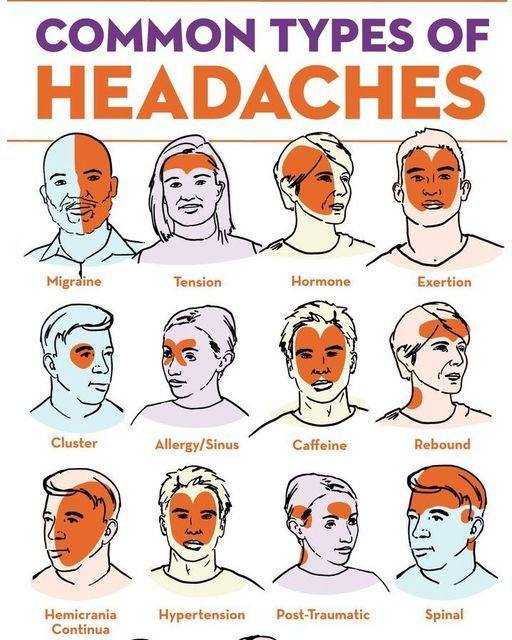Headaches can be much more than just a mild annoyance—they have the power to disrupt your day, reduce your ability to focus, and if they become chronic, they can really take a toll on your overall quality of life. Whether you’re a student buried in textbooks, a parent running around with a packed schedule, or someone working long hours at a computer, headaches don’t care who you are.

The upside is that once you figure out what kind of headache you’re experiencing and what’s triggering it, you can start managing it effectively and get ahead of the pain. Let’s start with the basics: what exactly is a headache? Simply put, a headache is any kind of pain that happens in the head—it might feel like a dull ache or a sharp, pounding throb. Headaches are generally classified into two main types. Primary headaches are actual medical conditions, including migraines, tension headaches, and cluster headaches. Secondary headaches, on the other hand, are symptoms of something else going on in your body, such as sinus infections, hormonal fluctuations, or even dehydration.
Understanding which type of headache you’re dealing with is the first step to finding lasting relief. Migraines are one of the most intense types of primary headaches. They often involve pulsing pain on one side of the head and can be accompanied by nausea, sensitivity to light or sound, and even visual disturbances called auras. Migraines are often triggered by things like stress, hormonal changes, certain foods, or even shifts in weather. Tension headaches are more common and feel like a tight band squeezing your head. They’re typically linked to stress, poor posture, or lack of sleep. Cluster headaches are less common but extremely painful, showing up in groups or “clusters,” and usually cause intense pain on one side of the head, often around the eye, along with symptoms like redness or nasal congestion. Secondary headaches have their own set of causes and characteristics. Sinus headaches result from inflamed or infected sinuses and usually involve pressure around the cheeks, forehead, or eyes.
Hormonal headaches tend to show up during periods, pregnancy, or menopause when estrogen levels fluctuate. One often-overlooked cause is medication-overuse headaches, which occur when you rely too heavily on pain relievers, leading to a cycle of recurring pain. It’s just as important to understand what might be setting off your headaches. Stress is a big one—it causes muscle tension, especially in your neck and shoulders, which can trigger pain. Hormonal changes, like estrogen spikes or dips, can affect blood vessels and bring on migraines. Dehydration is another common culprit, as your brain actually shrinks slightly when it lacks water, causing pain. Poor sleep habits can disrupt brain chemistry and inflammation levels, both of which can lead to headaches. Some foods—like aged cheeses, red wine, or processed meats—are known triggers, as is skipping meals altogether.
Sinus congestion from allergies or colds, eye strain from too much screen time, and even changes in weather, particularly shifts in barometric pressure, can also provoke headaches. Ironically, taking too many painkillers like ibuprofen or aspirin can lead to rebound headaches that keep coming back. Fortunately, there are smart and simple ways to treat headaches. Over-the-counter options like acetaminophen or ibuprofen work well for mild to moderate headaches. If migraines are severe or frequent, prescription medications like triptans or beta-blockers might be necessary. Drinking water is one of the easiest ways to ease or even prevent headaches. Hot or cold compresses can also help—cold for migraines, warm for tension headaches. Massaging your neck, scalp, or shoulders can relieve muscle tightness, and acupuncture has been shown to reduce chronic headache frequency. Relaxation techniques such as deep breathing, guided meditation, or progressive muscle relaxation can also bring your stress levels down. For sinus headaches, tools like saline sprays, steam treatments, or nasal steroids may bring relief. On a day-to-day basis, lifestyle changes go a long way in preventing headaches before they start. Drink plenty of water—aim for 8 to 10 glasses a day. Get consistent, high-quality sleep, ideally 7 to 9 hours per night. Pay attention to your posture, especially if you sit at a desk for long periods. Reduce screen time when possible and try using blue light filters or taking breaks using the 20-20-20 rule: every 20 minutes, look at something 20 feet away for 20 seconds. Don’t skip meals, and be mindful of foods and drinks that could be triggers. Managing stress through movement, journaling, or spending time outdoors can be a big help. Regular exercise also boosts endorphins, which act as natural painkillers. While most headaches are manageable at home, there are times when medical help is needed. Seek attention if a headache is sudden and severe, if it comes with confusion, fever, vision issues, or difficulty speaking, or if it follows a head injury or continues to worsen. In summary, headaches may be common, but that doesn’t mean they have to control your life. With some understanding, awareness, and simple changes to your routine, you can reduce their frequency and intensity and get back to living with less pain and more peace of mind.





